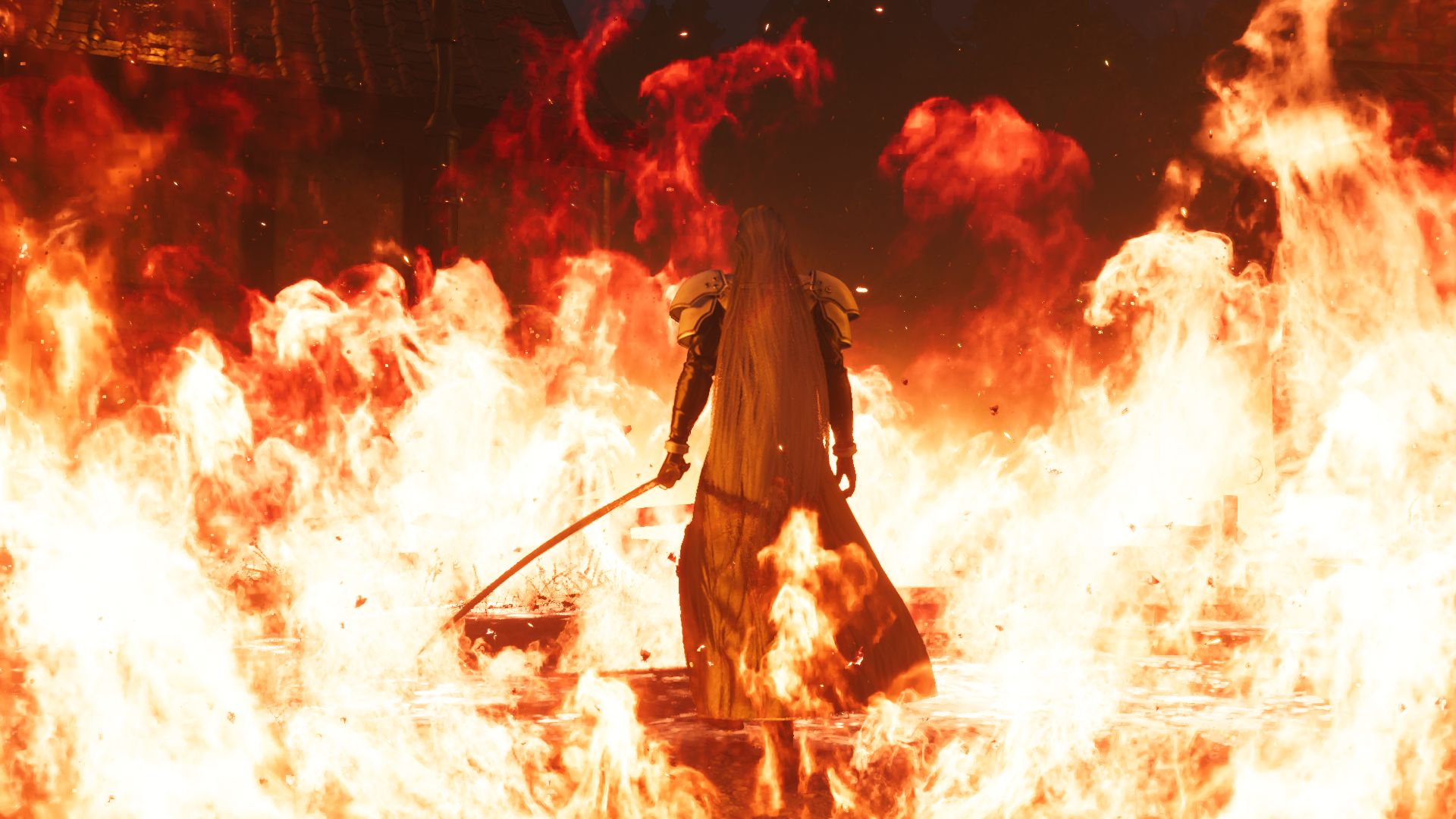
It's finally here. Final Fantasy 7 Rebirth has made the leap from PlayStation to Windows PC via Steam, ready to wrap you in a one-winged embrace of pure nostalgia. But in 2025, nostalgia alone is perhaps not enough.
Indeed, the amount of people out there excited for Final Fantasy 7 is diminished in a post Fortnite, post Genshin Impact world. Final Fantasy isn't the powerhouse franchise it once was, even if it holds a special place in the hearts of hundreds of thousands of gamers of a certain age. It's this unique needle that Square Enix finds itself charged to thread: how do you accommodate the warm and fuzzy nostalgia of the game's core fans, while appealing to the "modern" gamer, whoever that is.
Games like this are becoming increasingly rare in an age dominated by service games, addictive social media algorithms, and, dare I say it, player doubt. AAA games have increasingly come under scrutiny as corporate interests vacuum up the art and chase a quick buck. I'm grateful to Square Enix that they resisted the urge with Final Fantasy 7.
Square Enix went above and beyond with Final Fantasy 7 Rebirth, building heavily on the foundation set by FF7 Remake while baking in a mountain of new features and additional playstyle options. While I'm unsure how I feel about some of the new story elements, it celebrates the classic aspects in such a bombastic way I'm willing to overlook my doubts. Final Fantasy 7 Rebirth is a fantastic, high-quality PC port that shows Square Enix learned from its previous outing with Remake.
Final Fantasy 7 Rebirth: Visuals and Sound
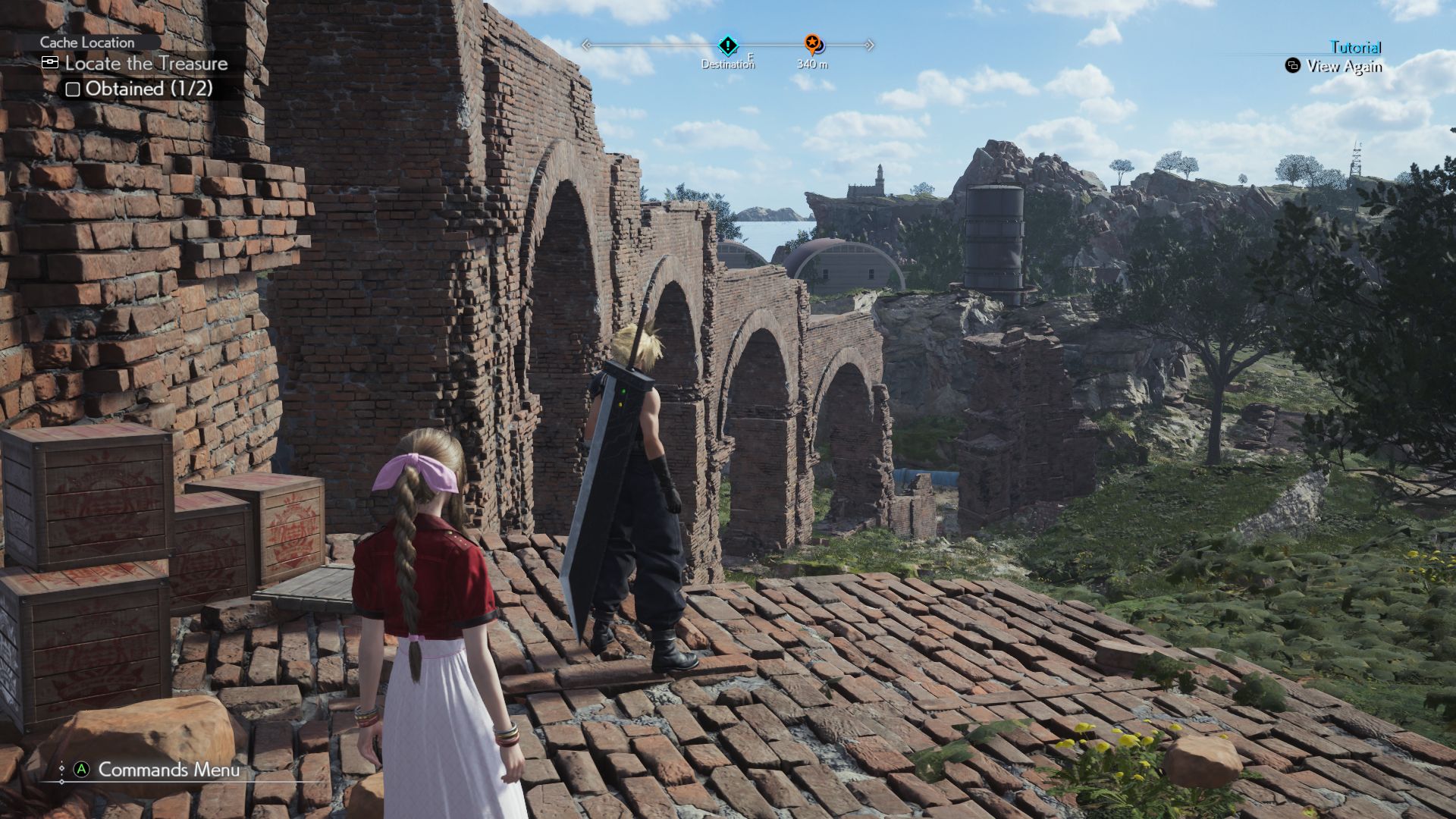
I've been playing Final Fantasy VII Rebirth the past few weeks, and it's clear how much Square Enix has learned from previous outings on PC, right from the settings menu.
The system I've been running FF7 Rebirth on is no slouch, and I don't have multiple computers to test it on, but the firm assures that it's optimized for the Steam Deck, which should give you some idea of how faithful Square Enix has been here. I've been playing it on my Windows 11 RTX 4080 laptop, with 32GB RAM and a Core i9 13950HX CPU, in virtually flawless 60 FPS at both 1440p and 1080p depending on whether or not I had access to my 4K TV at the time or not. I had some occasional dips when new assets were streaming into the game, but for the most part it has been nothing short of pleasant. No crashes, no glitches, and no bugs that I could find, but it's always hard to gauge when it comes to PC games. Your system mileage may vary, but I've had far, far worse experiences when it comes to AAA PC ports.
Square Enix gives players a lot more freedom to tweak the graphics settings in FF7 Rebirth over its predecessor, which was notoriously restrictive and "console"-like in its visual options. Sure, it could be better still — support for some of the more modern NVIDIA features is still missing. But overall, Final Fantasy 7 Rebirth's configurability is vastly expanded here, showcasing improved tooling and learning. Final Fantasy 7 Remake "Part 3" will likely be even better still, as the company delivers on its plan to eventually go for full simultaneous PC and console launches.
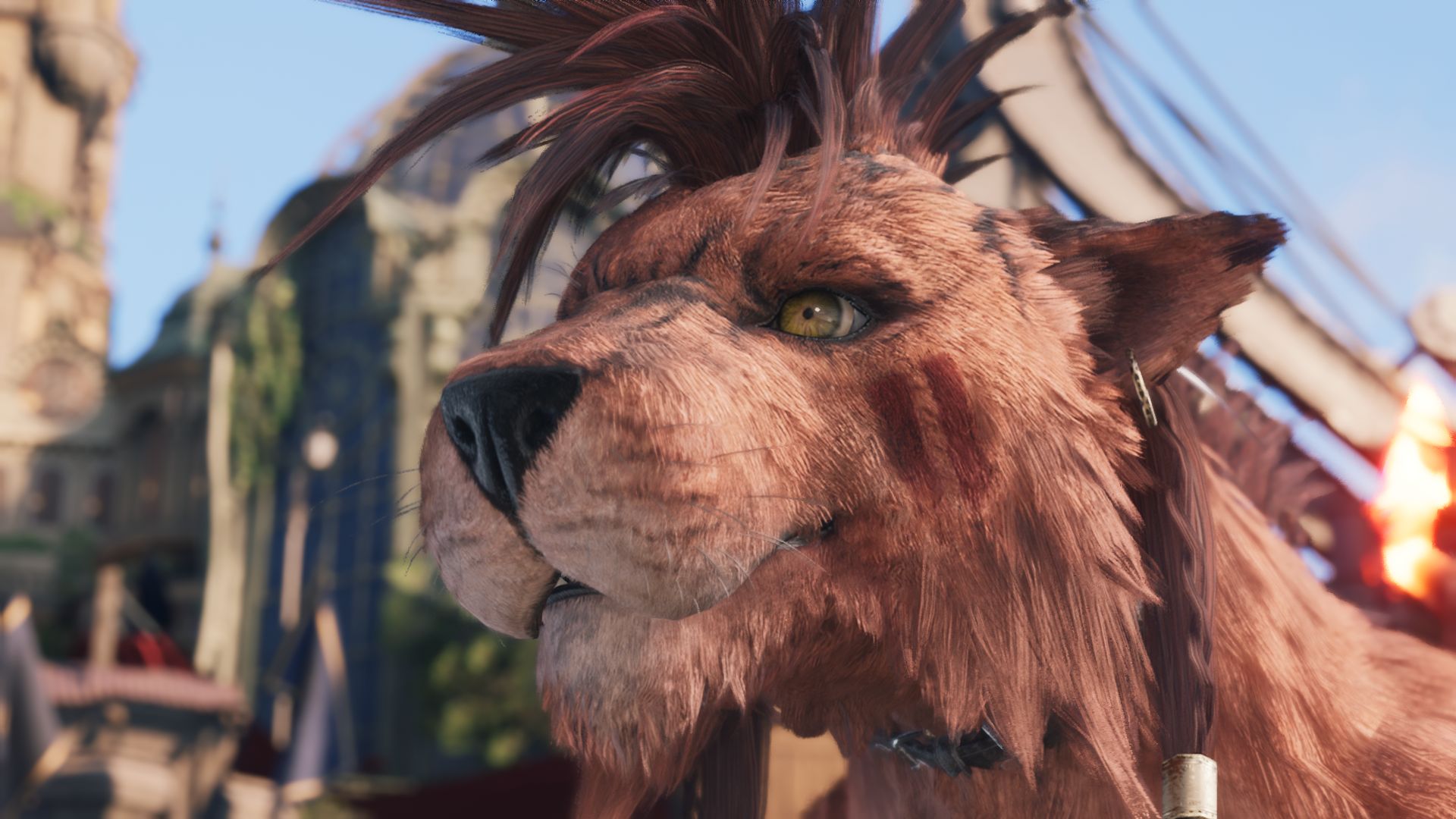
In terms of pure art, Final Fantasy 7 Rebirth is another spectacular looking game from Square Enix, and also showcases a vast improvement in quality when it comes to designing believable and dense open world environments. Comparing FF7 Rebirth to Final Fantasy 16 feels almost like comparing games from two different teams, despite the games being mere months apart.
Square Enix has been aggressively faithful to the static backgrounds of the source material, pulling out every stop to not only recreate, but also overdeliver on the environments from the original. Indeed, it seems Square Enix is acutely aware that nostalgic feelings warp and "upscale" memories when imagination emerges to fill the gaps in some of those blocky 90s visuals. To compensate for this, regions like Junon, Costa Del Sol, Cosmo Canyon, and others are so much more intricate and impressive than they perhaps needed to be. Even small details you remember from the original, like a specific store, NPC, or even mini-game, has been reproduced with respect and love. The sheer attention to detail is absolutely jaw-dropping, activating core memories on a near rapid fire cadence. For those without nostalgia of the original game, you'll discover a truly huge and varied world of interconnected biomes, sci-fi cityscapes, in a world wracked by post-industrial decay. The way gameplay delivers players towards some of that exploration isn't always spot on, but this is doubtless one of the most picturesque games of the modern age — thank Jenova it has an awesome camera mode.
This theme of "overdelivering" to accommodate the lens of nostalgia runs through every aspect of the game's audio-visual delivery. Iconic music tracks are remixed and take on new life as part of dynamic crescendos that increase as battles get more intense. Classic comedic "silly" scenes from the original take on increased spectacle and luster, while the darker, more pivotal moments are all the more emotional and gripping.
I'd say all up that Square Enix has probably delivered its best ever sensory experience with Final Fantasy 7 Rebirth. But this is no walking simulator, how does this RPG play?
Final Fantasy 7 Rebirth: Gameplay
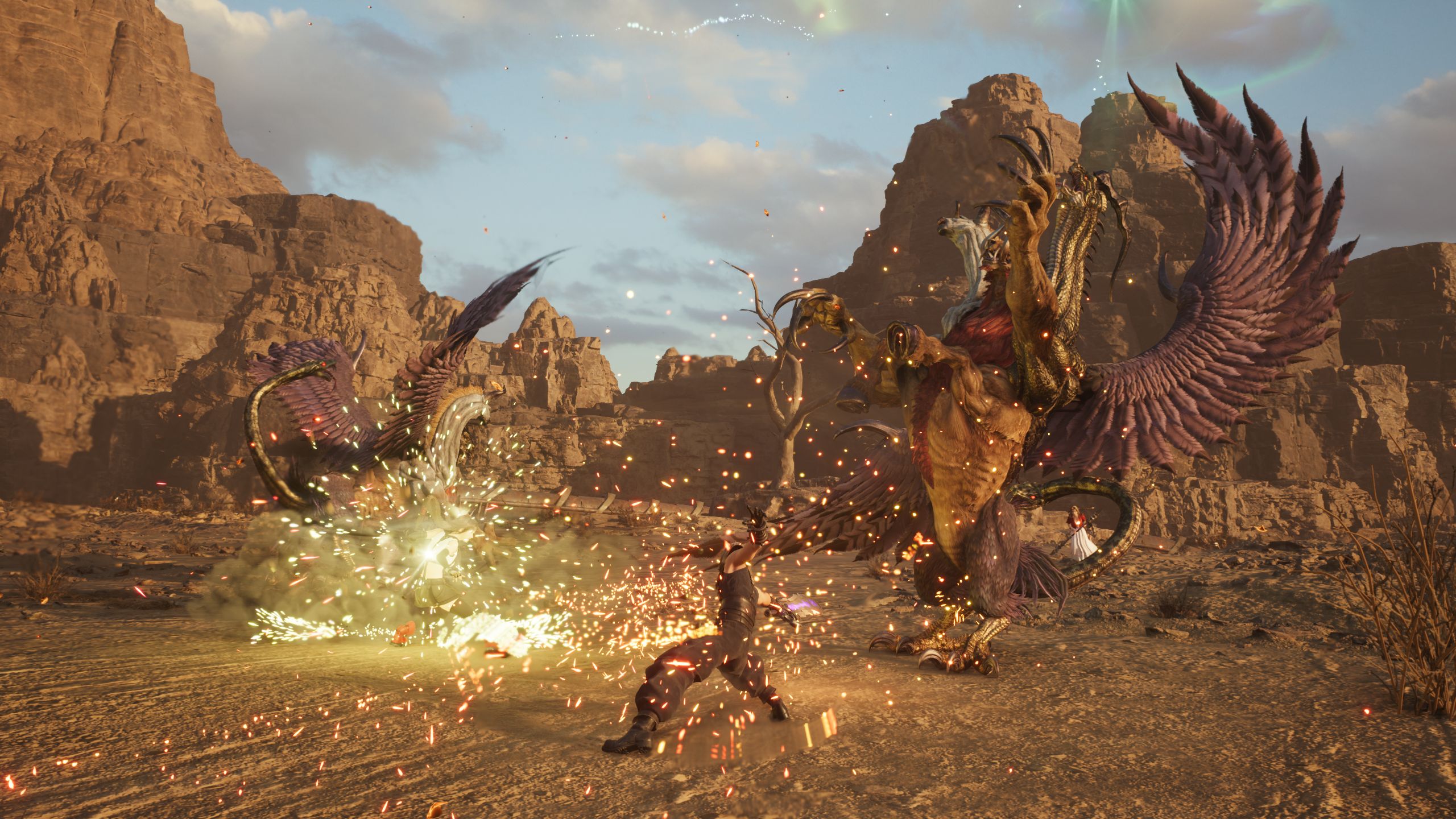
Final Fantasy 7 Remake and Rebirth remain something of a bridge between the turn-based tactical gameplay style of the original, and a more "active" hack n' slash style that Square Enix at least perceives that players want. It's sometimes controversial, but I think Final Fantasy 7 Rebirth continues to thread the needle well between the "ATB" gameplay systems of its progenitor while adding some modern flair.
Final Fantasy 7 Rebirth's combat is very similar to the original overall, with timers that give you access to abilities, enemies with stagger meters, atop stunning summonable entities and Limit Break attacks that are as satisfying to watch as they are spectacular. Rebirth adds some fresh complexity into the mix, though, giving skillful players new ways to express their combat creativity.
A variety of new socketable Materia abilities can produce new combo effects, helping reduce micromanagement on party members while synergizing up with enemy stagger burst damage windows. Square Enix also cleverly addressed the "necessity" to actually switch characters in Final Fantasy 7 Rebirth.
In the original, you could practically just sit on Cloud for the entire game and never even bother switching to other playable characters. That's a bit more of an issue in Final Fantasy 7 Rebirth, since Square Enix sought to recreate the entire character roster of the original. What would be the point if players end up only controlling Cloud the entire time?
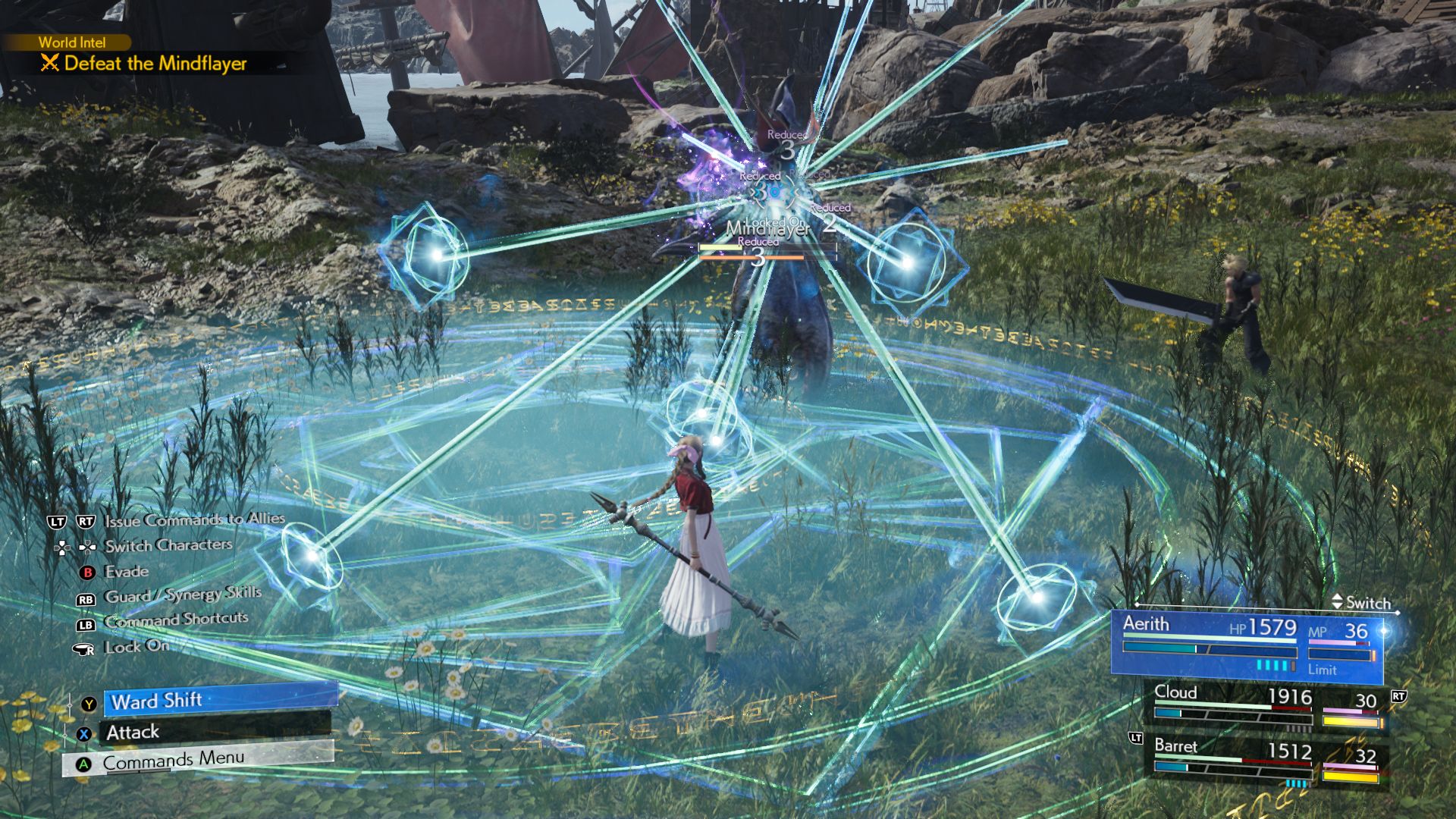
When you expend ATB charges on abilities in Final Fantasy 7 Rebirth, you gain points towards executing team attacks. It cleverly encourages switching between characters frequently, since building up the ATB meter to actually gain abilities can be quite slow if your party members are left to their own devices as AI companions. Once you have enough points, you can perform powerful Synergies between specific party members, which effectively function as mini Limit Breaks. These attacks are spectacular to watch play out, but are also incredibly powerful and potent. Some can give you extra ATB charges, some can extend an enemy's stagger meter, and some just do crazy damage.
As a result, in Rebirth, I found myself jumping between characters far more frequently than I did in Remake. Some of the optional side content, which often includes powerful mini bosses, really do ask players to think and strategize around their playstyles to achieve victory efficiently. You can in theory just brute force everything by spamming Phoenix Down revival items or potions, but it's far more rewarding and effective to play the game in the way it's asking. There's always an easy mode too, though, if you do fancy a pure hack n' slash narrative-style experience.
Final Fantasy 7 Rebirth lays out the post-Midgar story from the original, contained on Disc 1 of the PlayStation version. After playing FF7 Remake, I was really doubtful that Square Enix would really try to recreate the entire Disc 1 experience, but shut my mouth, they actually went and did it.
With a variety of open world locations interconnected with wide-linear dungeons, Final Fantasy 7 Rebirth is a truly huge game that will see completionists spend anywhere up to 150 hours combing every location. A typical story run that dabbles in side quests might see around 70 hours, while those who beeline through the story are probably looking at around 40.
My biggest criticism of Final Fantasy 7 Rebirth undoubtedly pertains to its open world gameplay, which learns from the Ubisoft world of tired game design, rather than more thoughtful design conventions learned from Elden Ring or Zelda. Final Fantasy 7 Rebirth as a result absolutely shines in its linear areas, where classic FF7 dungeoneering takes center stage. Here, the pacing is better, with areas culminating in cinematic boss battles, complete with explorative secrets hidden off the beaten path. The open world areas are disappointing icon-a-thons generally speaking, which hide some truly great optional gameplay beneath a buffet of immersion-busting handholding mechanics. Just 5 minutes stepping into the wide world after Kalm town, you'll be besieged by random hints that "something might be over there," complete with Ubisoft's choring tower puzzles that somehow Square Enix missed the memo on.
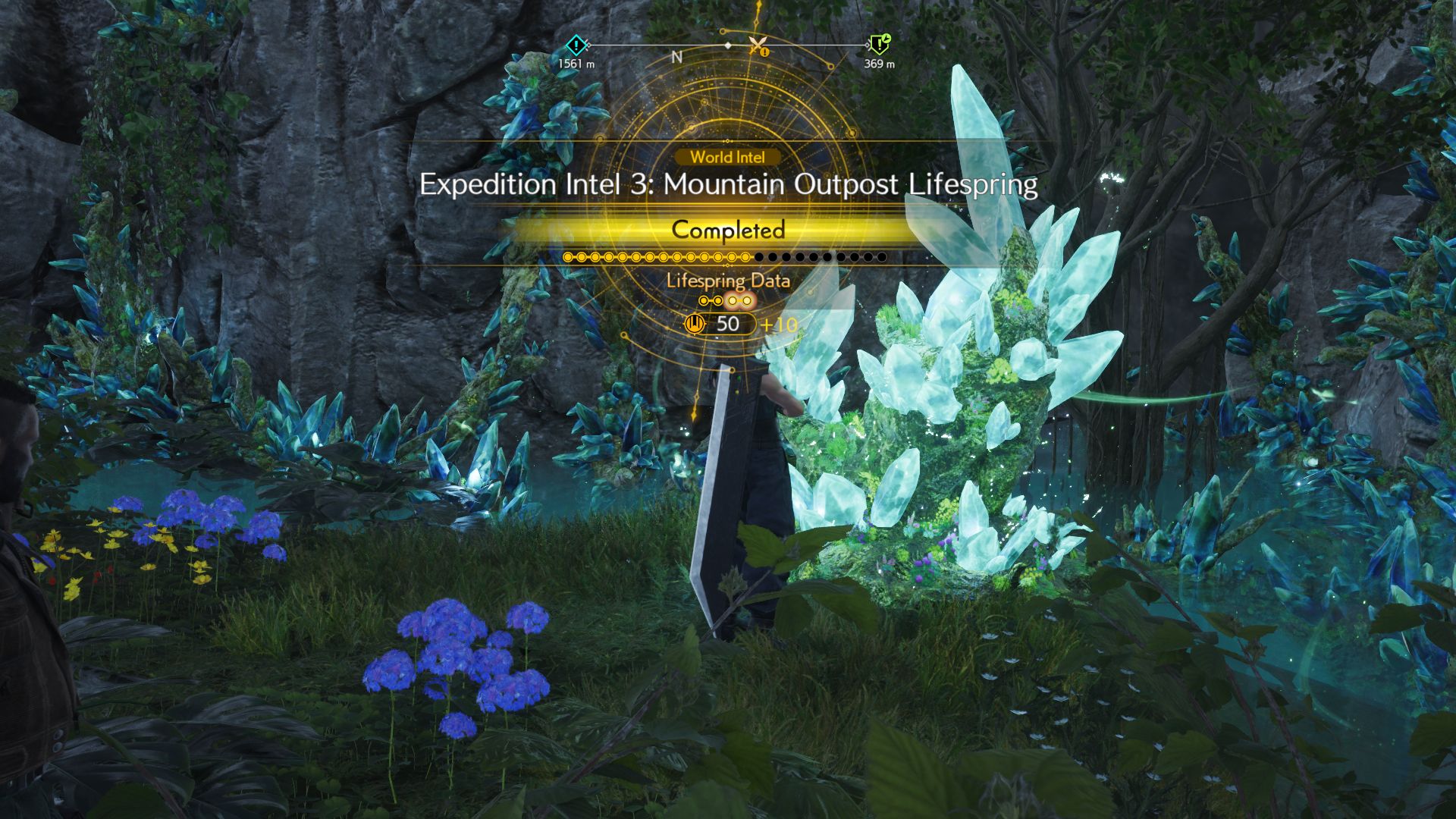
On the plus side, the side content is entirely optional. As soon as I got bored trying to figure out how to get to the next map marker, I just ignored the data requests from the mildly irritating Chadley and headed straight for the story content. The game is unfortunately far more enjoyable this way, even if I did occasionally happen upon some truly interesting optional bosses and side stories that added interesting context to existing lore and characters. I just would have preferred to have discovered it on my own terms, rather than be ushered there with patronizing icons and immersion-busting markers that only detract from the experience. After Elden Ring, I can't really enjoy open world games any other way — but realize this is wholly my subjective opinion. I just think it's better design if the points of interest actually look like points of interest while exploring, rather than being artificially forced there by some obnoxious UI mechanic. Many of those UI elements and animations are also far too irritatingly slow, and lock you out of control for unnecessary periods of time.
It's a shame, because it really is my only real criticism of the open world gameplay layout, because there really is some morsels of greatness hidden throughout. The way Final Fantasy 7 Rebirth retells the Fort Condor storyline, as an optional side quest, is absolutely amazing. There are tons of fun and engaging mini-games scattered throughout. Some of the mini bosses you'd find from grinding Chadley's "enemy data" collection events are really well-designed and interesting, and yield powerful and compelling rewards. The game didn't need to force players to jump through so many arbitrary hoops to get there, though. Why do I need to climb a Ubisoft tower before I can fight the cool monsters? It's time-wasting and annoying. I suspect FF7 Remake Part 3 will pull back on some of these game design choices, as they were probably made back when Ubisoft was the standard-bearer for open world design.
Indeed, like I noted, the game really shines in its more traditional linear segments. Square Enix's boss battle design is absolutely fantastic, and combines thoughtful tactical gameplay with cinematic spectacle in a way I've not really seen other studios achieve. It was strong in Final Fantasy 7 Remake, Final Fantasy 16, and is even stronger in Rebirth, and it's one trend I hope they keep iterating upon.
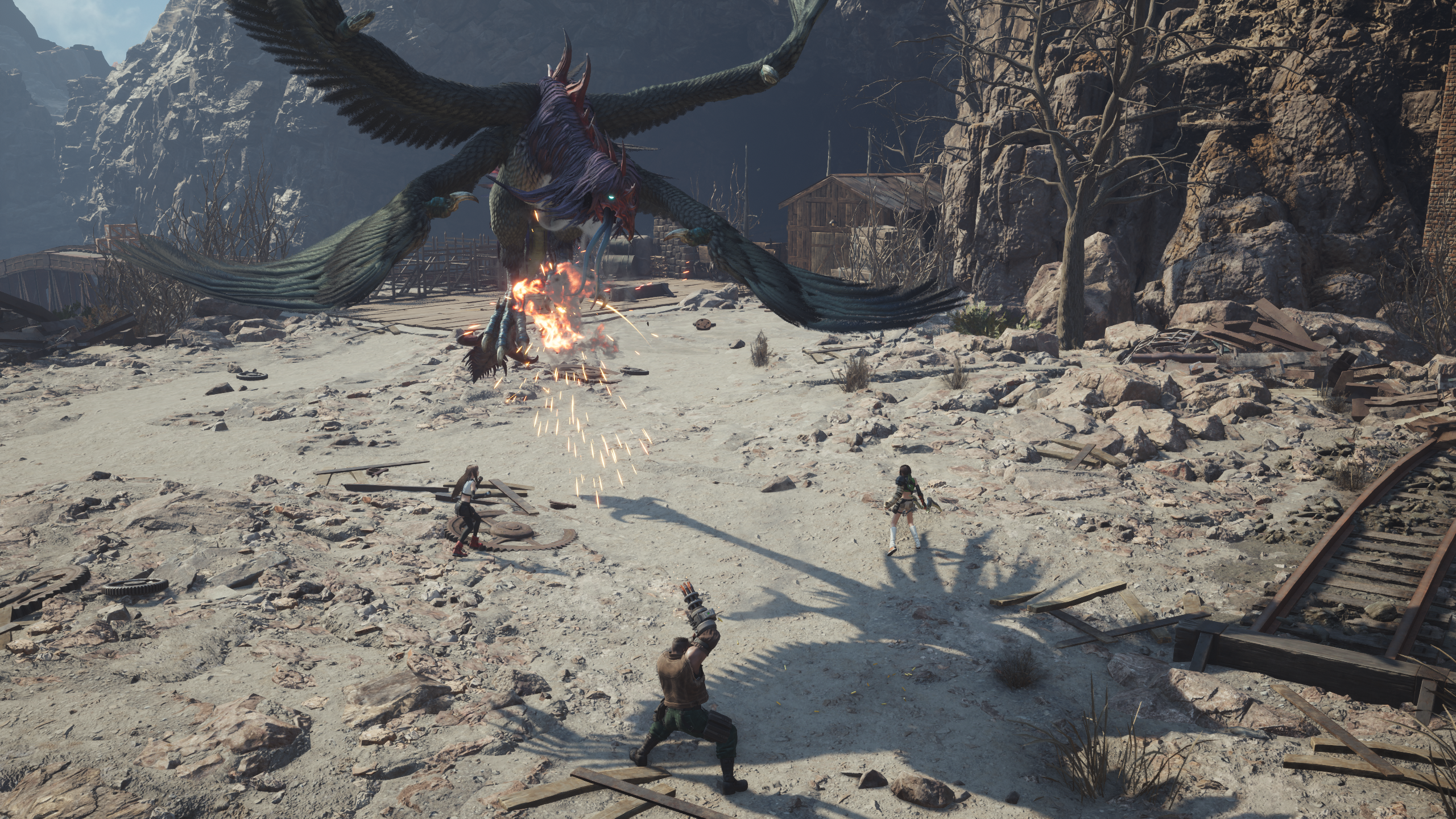
Square Enix maintains the theme of "overdelivering" on the original game's elements. Monsters and boss battles you might remember from the original end up being far more bombastic and awe-inspiring, oftentimes with more thoughtful positioning in the game's plot. The "Assess" Materia reveals enemy's weaknesses and gives tactical suggestions, while also revealing new lore and information about the game's world. Enemies and locations that seemed totally nonsensical in the original are given new backstories in Rebirth, offering something new to discover around every corner.
While I did skip a ton of the optional content to make embargo for this review, I'm already eager to go back to playing, which is the hallmark of a great game in my view. The huge character roster, ability Materia options, weapon varieties, and party compositions truly opens up millions of different playstyle combinations. Do I want Aerith to be more defensive or offensive? Should I build Cloud around melee or magic, or a combination? Who do I even want in my main party composition? What optional Materia from Chadley missions should I research to unlock? Which of Cloud's love interests should I pursue ...?
There's so much variety on offer in Final Fantasy 7 Rebirth, perhaps a little too much even at times — but thankfully you can set your own pace, and engage in the content you feel like engaging with. This is a game you can really well and truly sink your teeth into, more than earning its keep.
Final Fantasy 7 Rebirth: Story Direction (No Spoilers)
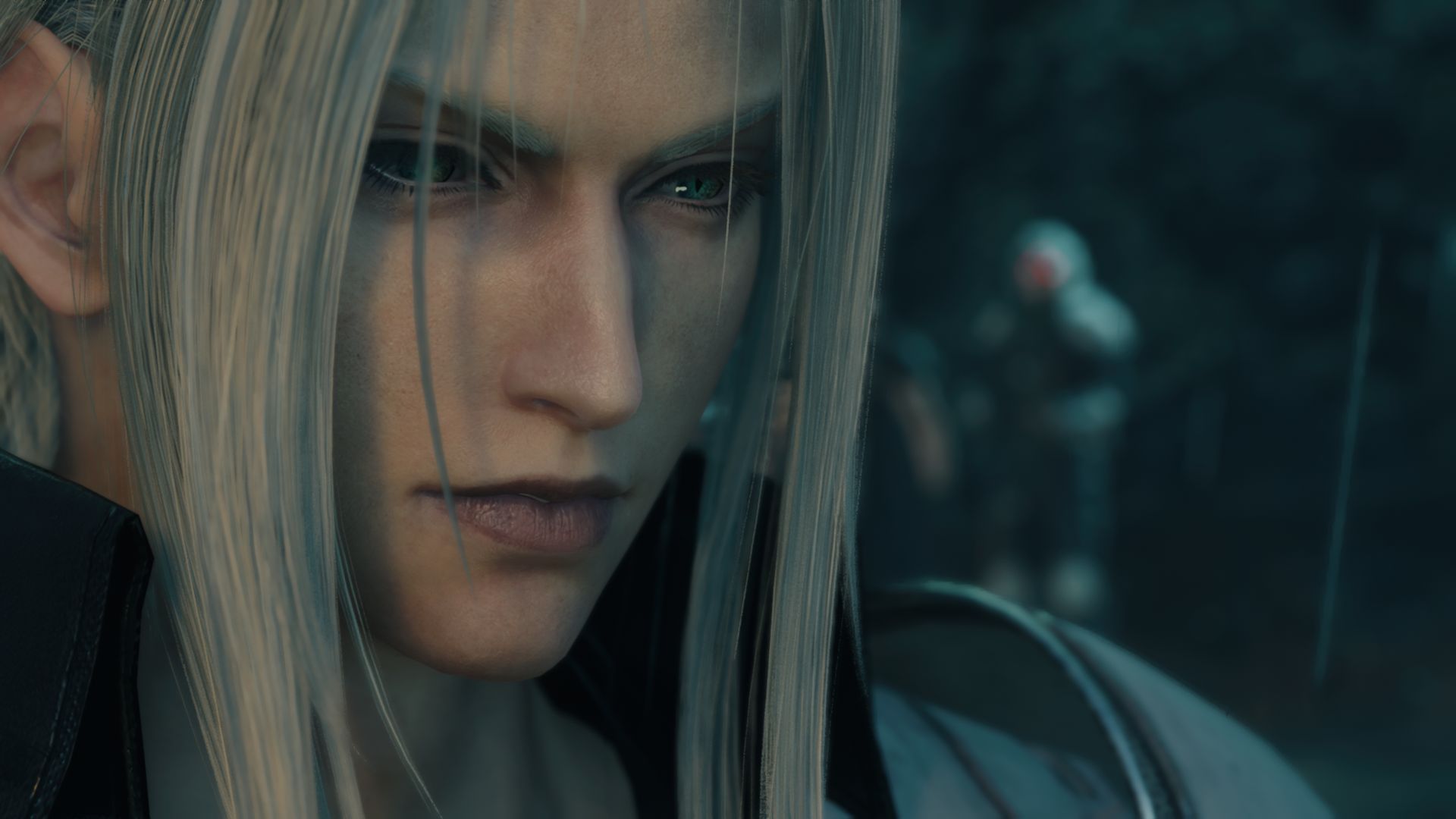
It's always a bit tough writing around story beats for reviews, but Final Fantasy 7 Rebirth compounds the challenge. Imagine you're a developer on Final Fantasy 7 Rebirth. Not only do you have to appease fans of the original who have certain expectations, you also have to deliver a game for modern audiences, while acknowledging the fact that a large contingent of players likely not only didn't play FF7 Remake, but have most likely never played Final Fantasy 7 at all. The original game launched in 1997, a wholly different time, although I would argue that many of its themes are even more relevant in 2025.
Final Fantasy 7 is a uniquely bleak entry in the franchise's pantheon, while also being oddly poignant. The game revolves around the Shina Corporation destroying the planet for profit and power, in essence, and trampling upon anyone who dare get in the way. Meanwhile, a super soldier human-alien hybrid by the name of Sephiroth lurks in the background, seeking vengeance on the society responsible for his creation, on a path to cosmic godhood. Yet, the heroes of the story, mercenary Cloud, alongside ecoactivists Tifa and Barrett, and Shinra Corporation escapees Red XIII and Aerith, still find time to kick it back at the beach and hang out at a theme park.
Final Fantasy VII Rebirth like any self-respecting anime-style story is a roller coaster of silly and fun spectacles intertwined with deep pits of existential dread and paranoid rumination. It pays homage to the big moments of the original, while doubling down on both the weird and wacky and the dark and depressing elements. Some may find the story to feel a bit erratic as a result, and I would argue that sometimes the game does lean a bit too hard into its light-hearted elements at time, undermining the gravitas of some of gaming's most celebrated villains.
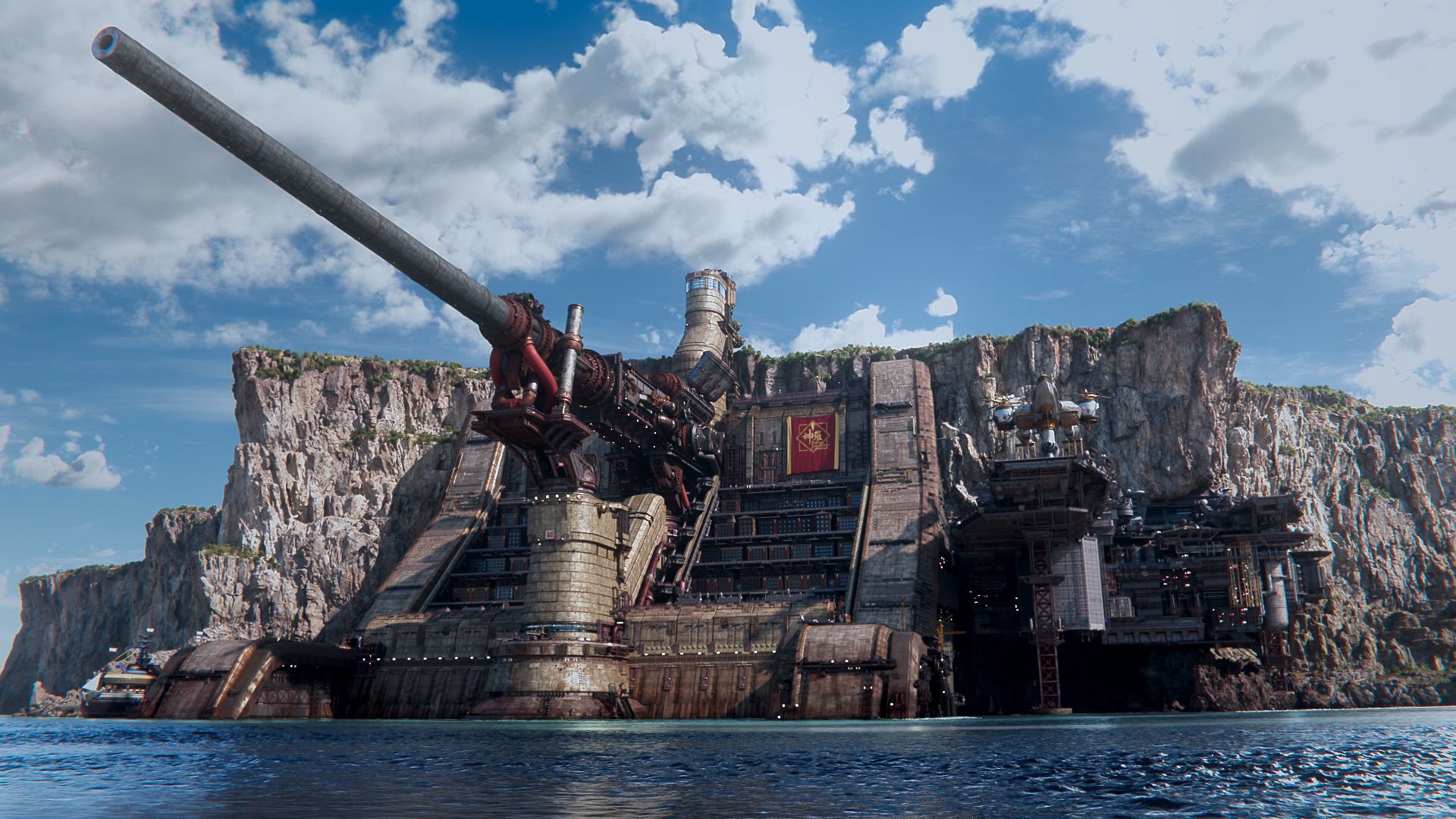
In a way, the issue with Rebirth is that it is "incomplete" without the third and final act, which, without spoiling, should be a far darker trajectory than what Rebirth offers. I think all three 7 Remake entries played as a single entity will probably pace out far better than all three as separate titles, but therein lies the challenge Square Enix set for itself. How do you rebuild such a timeless classic, while doing justice to the game's most iconic moments? You can't exactly change the entire story structure to accommodate the new pacing cadence, and import darker edges which are designed to appear far later on, for example. As such, I would say that you should see Final Fantasy VII Rebirth as the optimistic second act, before shit well and truly hits the fan.
I would say given the difficulties of reproducing something like this, Square Enix overall does a fantastic job, especially if you're a fan of the original. Some of the iconic scenes from the previous game are elevated to new heights in Rebirth, with fresh insights into the game's characters and their motivations. Even some oddities from the original gain fresh context, which add to the original narrative rather than detract. That can't be said for every new story beat, though.
Without spoiling, I will say that Rebirth continues some of the more controversial "meta" plot points of Remake, and they still don't really pay off. I'm holding out final judgement until I play Part 3, in potentially vain hope that they will have some kind of clever unforeseen payload. But I'm worried that Square Enix "overthought" the need to try new things with Rebirth — a straight retelling with extra context would have been my preferred route here. But I admit it's subjective a bit, which is why I'm reserving final judgement on that until Part 3.
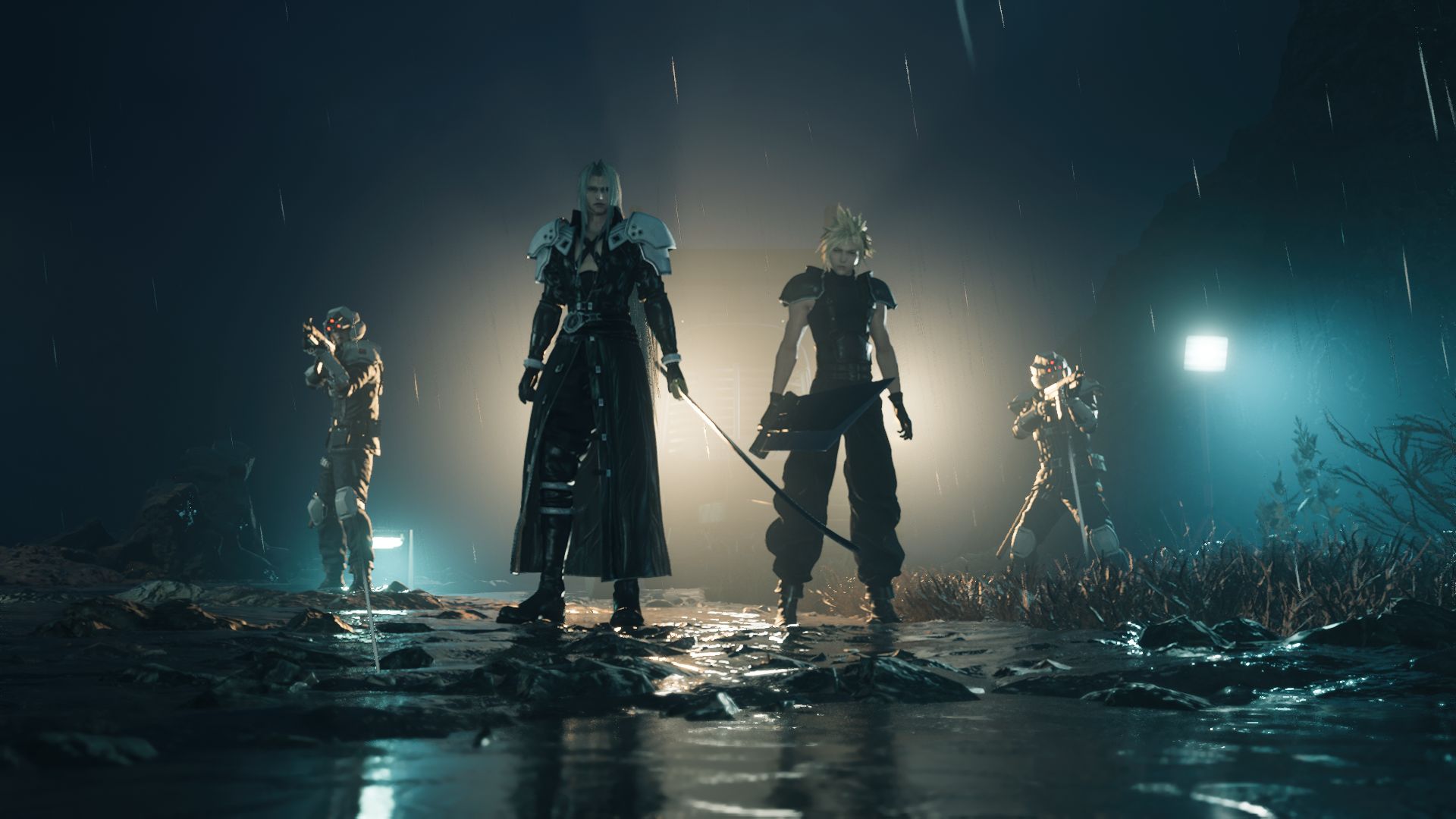
What we do have is a fun and engaging melodrama with unique and iconic characters, hitting that fantastical soap opera vibe like few other franchises can boast. It's funny and silly when it wants to be, but harrowingly dark when necessary as well. The comedy bits land well, and the nuggets of nostalgia may bring a tear to the eye of wistful long-time fans.
It's hard for me to extract all memories of the original and say for sure how modern audiences will feel about it. Those who have zero nostalgia for Final Fantasy 7 may find it a little too wacky, and even non-sequitur at times. The sheer volume of characters to track and events to remember might be quite dizzying, I can imagine. But like I said, given the needle Square Enix had to thread here between satisfying fans both old and new, I'd say they did a truly stellar job.
I played the game mostly with Japanese audio, but the English dub is quite good. The character work and facial mocap is expressive and evocative, and Final Fantasy 7 Rebirth retains some of the best villains the industry has ever seen.
I would argue that playing through Final Fantasy 7 Remake is absolutely necessary to truly enjoy Rebirth, given that it's a very direct sequel. There is a recap cutscene you can watch from the main menu, but I don't think it really conveys the underlying horror that is Sephiroth, as he manipulates and stalks the heroes from the shadows.
Long time fans will adore revisiting the game's iconic locations and events regardless, and newcomers may end up falling in love with the character roster like millions did back in the 90s.
Final Fantasy 7 Rebirth: Conclusion
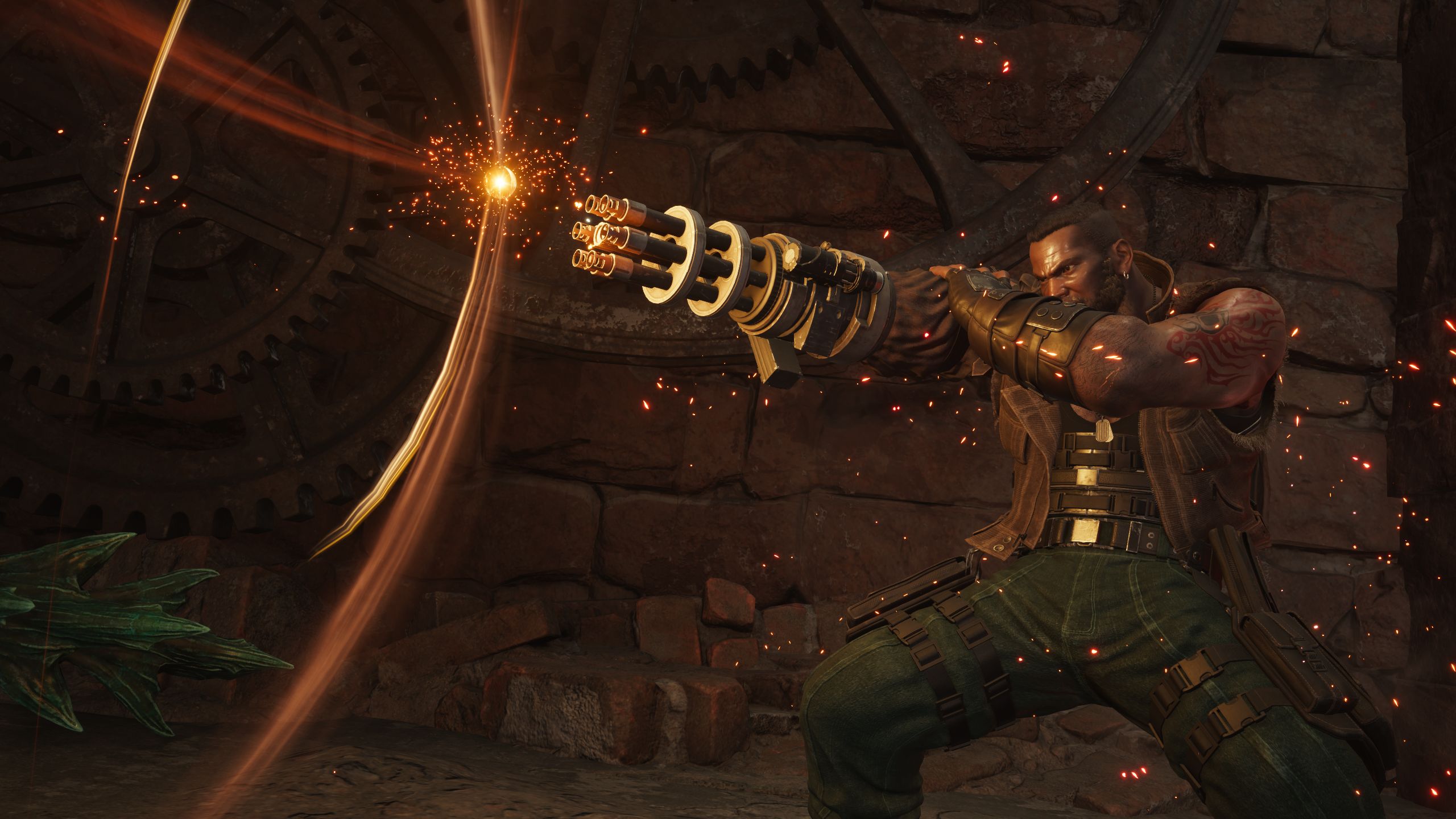
Final Fantasy 7 Rebirth is, at its core, a fantastic action RPG with tactical leanings, giving fans of the original a drip feed of nostalgic joy while adapting a classic with modern flair for newcomers. Square Enix balances serving fans of the original game quite well, while injecting enough modernity to bring the game up to par with contemporary expectations. The firm clearly learned a lot developing Final Fantasy 7 Remake and Final Fantasy 16 for PC, and has poured those learnings into Rebirth, which for my money seems like a capable PC port with decent configurability.
The fact Square Enix managed to squeeze practically everything from the original "Disc 1" Final Fantasy 7 experience, characters, locales, and all, with a modern AAA quality bar is nothing short of remarkable. The game does trip up with its open world game design, and I think some of its new story beats are potentially the result of overthinking rather than creativity, but they're ultimately small blemishes on an otherwise grand tapestry.
While Rebirth has its flaws, it's a welcome iteration for a franchise that used to be known for consistently delivering generational experiences. In a world increasingly dominated by shallow free-to-play brain rot, RPGs of this size and scope and quality are becoming a rarity. It's not without a degree of general gratitude that I extend my love for the Final Fantasy 7 Remake project, and the accomplishments of the team. I never thought I'd live to experience a modern take on Final Fantasy 7, which remains one of, if not, my favorite video game of all time. It's not perfect by any means, but the fact it even exists feels like nothing short of a miracle.
If Square Enix iterates on Final Fantasy 7 Remake "Part 3" the same way they iterated on Rebirth, I'm more optimistic than ever for the franchise's future.







